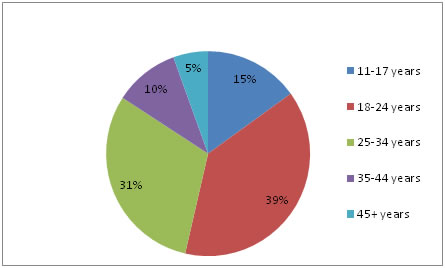Dating Violence Incidence In Usa
Incidence and Outcomes of Dating Violence Victimization Among High School Youth: The Role of Gender and Sexual Orientation Katie M. Edwards, PhD Journal of Interpersonal Violence 2015 33: 9, 1472-1490. Sep 21, 2021 Teen dating violence: A meta-analytic review of prevalence rates: Wincentak, K., Connolly, J., Card, N. Psychology of Violence: 2017: 102: Physical dating violence, sexual violence, and unwanted pursuit victimization: A comparison of incidence rates among sexual-minority and heterosexual college students.
- Dating Violence Incidence In Usable Space
- Dating Violence Incidence In Usa Statistics
- Dating Violence Statistics 2020

The purpose of this study was to examine rates of dating violence (DV) victimization and DV victimization outcomes as a function of sex and sexual orientation. Participants were 25,122 high school students who participated in the 2013 New Hampshire Youth Risk Behavior Survey study. Heterosexual youth, especially heterosexual male youth, were less likely to report experiencing physical and sexual DV victimization than lesbian, gay, bisexual, and questioning (LGBQ) girls and boys. Among LGBQ girls and boys, there was little variability in rates of DV victimization with the exception of questioning boys being significantly more likely to experience physical and sexual DV victimization than several other LGBQ sub-groups. Furthermore, LGBQ DV victims reported worse outcomes than heterosexual DV victims on measures of depression, binge drinking, and poor academic performance. At the sub-group level, bisexual and questioning female victims were most at risk for depression; bisexual and questioning male victims were most at risk for binge drinking; bisexual male victims were most at risk for poor academic performance. The findings underscore the importance of better understanding variability in DV incidence and outcomes within the LGBQ population and using this information to inform clinical intervention and prevention efforts.
Keywords
Dating Violence Incidence In Usable Space
| Banyard, V. L., Cross, C. (2008). Consequences of teen dating violence: Understanding intervening variables in ecological context. Violence Against Women, 14, 998-1013. doi: Google Scholar SAGE Journals ISI |
| Dank, M., Lachman, P., Zweig, J. M., Yahner, J. (2013). Dating violence experiences of lesbian, gay, bisexual, and transgender youth. Journal of Youth and Adolescence, 43(5), 846-857. doi: Google Scholar Crossref Medline |
| Dardis, C. M., Dixon, K. J., Edwards, K. M., Turchik, J. A. (2014). An examination of the factors related to dating violence perpetration among young men and young women and associated theoretical explanations: A review of the literature. Trauma, Violence, & Abuse, 16, 136-152. doi: Google Scholar SAGE Journals |
| Dewaele, A., Van Houtte, M., Vincke, J. (2014). Visibility and coping with minority stress: A gender-specific analysis among lesbians, gay men, and bisexuals in Flanders. Archives of Sexual Behavior, 43(8), 1601-1614. doi: Google Scholar Crossref Medline ISI |
| Duke, A., Davidson, M. M. (2009). Same-sex intimate partner violence: Lesbian, gay, and bisexual affirmative outreach and advocacy. Journal of Aggression, Maltreatment & Trauma, 18, 795-816. Google Scholar Crossref |
| Edwards, K. M., Sylaska, K. M. (2013). The perpetration of intimate partner violence among LGBTQ college youth: The role of minority stress. Journal of Youth and Adolescence, 11, 1721-1731. doi: Google Scholar Crossref |
| Edwards, K. M., Sylaska, K. M., Neal, A. M. (2015). Intimate partner violence among sexual minority populations: A critical review of the literature and agenda for future research. Psychology of Violence, 5, 112-121. Google Scholar Crossref |
| Freedner, N., Freed, L. H., Yang, W., Austin, S. B. (2002). Dating violence among gay, lesbian, and bisexual adolescents: Results from a community survey. Journal of Adolescent Health, 31, 469-474. Google Scholar Crossref Medline ISI |
| Frost, D., Meyer, I. (2009). Internalized homophobia and relationship quality among lesbians, gay men, and bisexuals. Journal of Counseling Psychology, 56, 97-109. doi: Google Scholar Crossref Medline ISI |
| Halpern, C. T., Young, M. L., Waller, M. W., Martin, S. L., Kupper, L. L. (2004). Prevalence of partner violence in same-sex romantic and sexual relationships in a national sample of adolescents. Journal of Adolescent Health, 35, 124-131. doi: Google Scholar Crossref Medline ISI |
| Hatzenbuehler, M. L. (2009). How does sexual minority stigma “get under the skin”? A psychological mediation framework. Psychological Bulletin, 135, 703-730. doi: Google Scholar Crossref |
| Herek, G. M. (2009). Sexual stigma and sexual prejudice in the United States: A conceptual framework. In Hope, D. A. (Ed.), Contemporary perspectives on lesbian, gay, and bisexual identities (pp. 65-111). New York, NY: Springer. Google Scholar Crossref |
| Hickman, L. J., Jaycox, L. H., Aronoff, J. (2004). Dating violence among adolescents: Prevalence, gender distribution, and prevention program effectiveness. Trauma, Violence, & Abuse, 5, 123-142. doi: Google Scholar SAGE Journals |
| Khan, L., Kinchensen, S., Shanklin, S. L., Flint, S. L., Hawkins, J., Harris, W. A., . . . Zaza, S. (2014). Youth risk behavior surveillance—United States, 2013. Retrieved from http://www.cdc.gov/mmwr/pdf/ss/ss6304.pdf Google Scholar |
| Lewis, R. J., Millentich, R. J., Kelley, M. L., Woody, A. (2012). Minority stress, substance use, and intimate partner violence among sexual minority women. Aggression and Violent Behavior, 17, 247-256. doi: Google Scholar Crossref ISI |
| Martin-Storey, M. (2015). Prevalence of dating violence among sexual minority youth: Variation across gender, sexual minority identity, and gender of sexual partners. Journal of Youth and Adolescence, 44, 211-224. Google Scholar Crossref Medline ISI |
| McKenry, P. C., Serovic, J. M., Mason, T. L., Mosak, K. (2006). Perpetration of gay and lesbian partner violence: A disempowerment perspective. Journal of Family Violence, 21, 233-243. doi: Google Scholar Crossref ISI |
| Meyer, I. H. (2003). Prejudice, social stress, and mental health in lesbian, gay and bisexual populations: Conceptual issues and research evidence. Psychological Bulletin, 12, 674-697. Google Scholar Crossref |
| Pathela, P., Schillinger, J. A. (2010). Sexual behaviors and sexual violence: Adolescents with opposite-, same-, or both-sex partners. Pediatrics, 126, 879-886. doi: Google Scholar Crossref Medline ISI |
| Silverman, J. G., Raj, A., Mucci, L. A., Hathaway, J. E. (2001). Dating violence against adolescent girls and associated substance use, unhealthy weight control, sexual risk behavior, pregnancy, and suicidality. Journal of the American Medical Association, 286, 572-579. Google Scholar Crossref Medline ISI |
| Straus, M. A. (2010). Thirty years of denying the evidence on gender symmetry in partner violence: Implication for prevention and treatment. Partner Abuse, 1, 332-362. doi: Google Scholar Crossref |
| Straus, M. A. (2015). Dyadic concordance and discordance in family violence: A powerful and practical approach to research and practice. Aggression and Violent Behavior, 24, 83-94. doi: Google Scholar Crossref ISI |
| Turell, S., Herrmann, M., Hollander, G., Galletly, C. (2012). Lesbian, gay, bisexual, and transgender communities’ readiness for intimate partner violence prevention. Journal of Gay & Lesbian Social Services, 24, 289-310. doi: Google Scholar Crossref |
| Walters, M. L. (2011). Straighten up and at like a lady: A qualitative study of lesbian survivors of intimate partner violence. Journal of Gay & Lesbian Social Services, 23, 250-270. doi: Google Scholar Crossref |
Dating Violence Incidence In Usa Statistics
Bldg 31, Room 2A32, MSC 2425, 31 Center Drive, Bethesda, MD20892-2425, United States